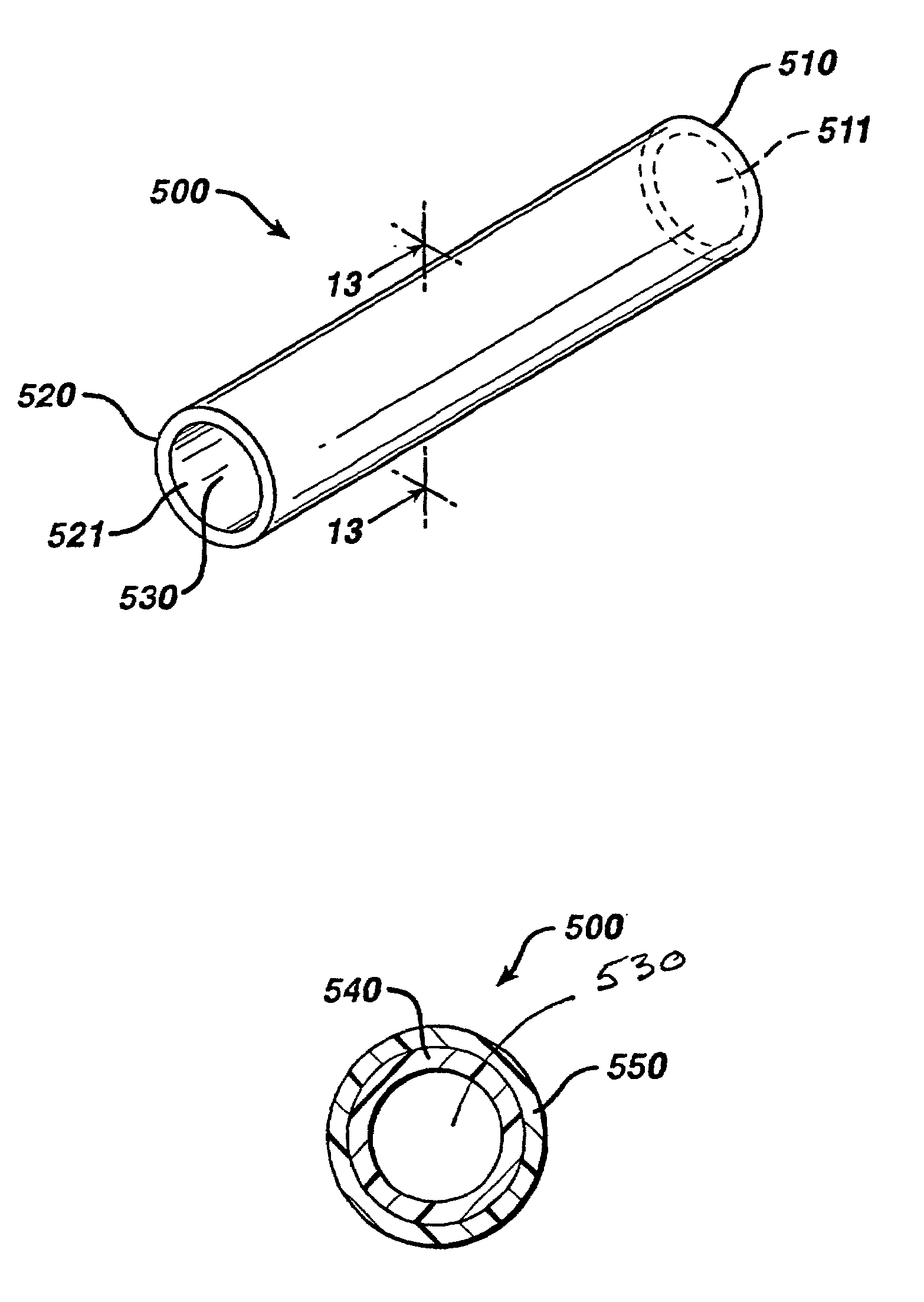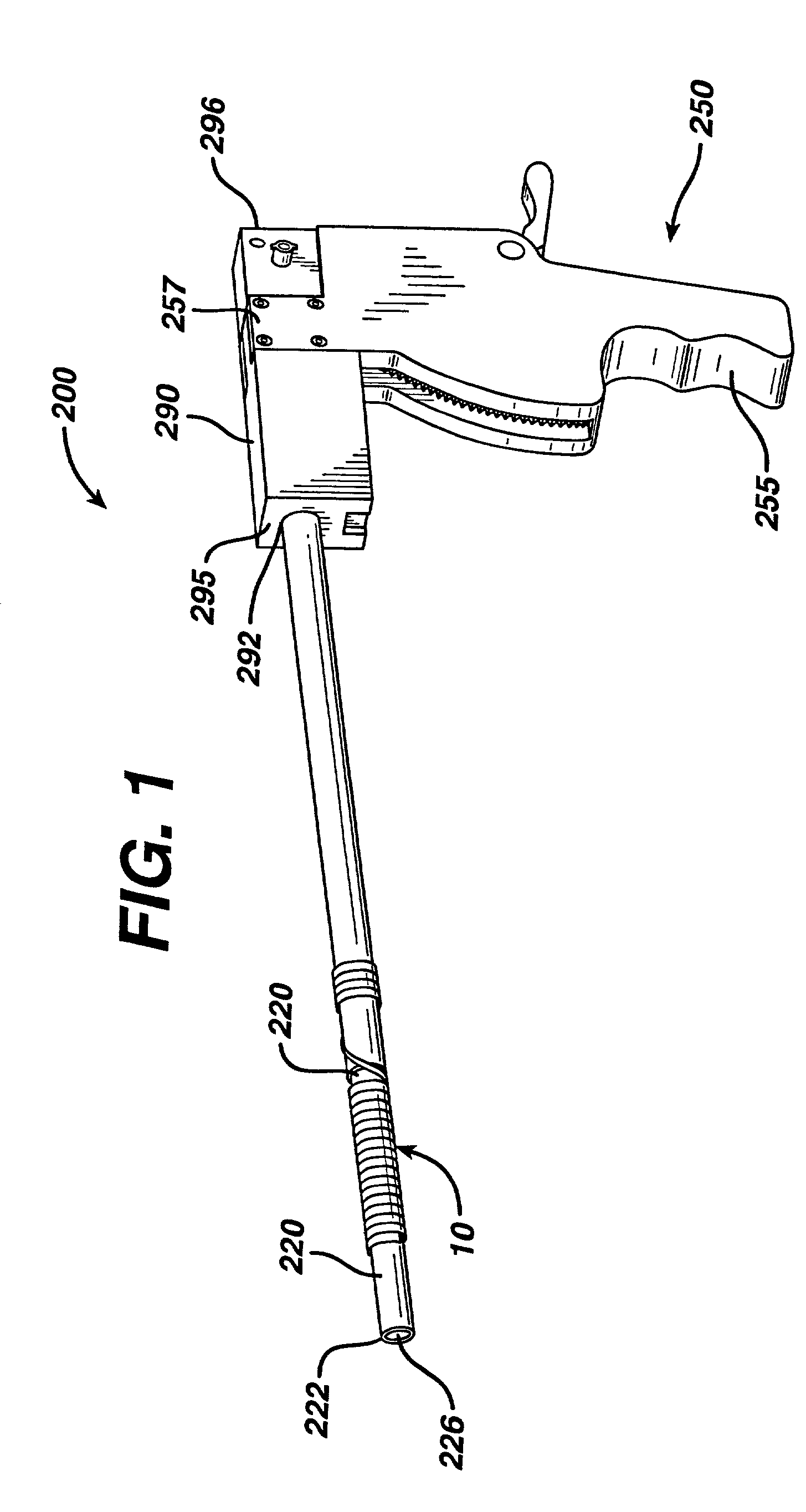Biodegradable stent
a biodegradable, stent technology, applied in the field of medical devices, can solve the problems of affecting the function of the stent, affecting the stent, etc., and achieve the effect of easy passage from the body lumen
- Summary
- Abstract
- Description
- Claims
- Application Information
AI Technical Summary
Benefits of technology
Problems solved by technology
Method used
Image
Examples
example 1
[0073]A material blend was prepared for use in manufacturing the inner core and outer layer of a fiber useful to wind into a stent of the present invention. The use of this material in fiber formation is described in Example 2.
[0074]The outer shell layer was constituted from a blend of 60 wt % of a first random copolymer containing 90 mole % of polymerized glycolide and 10 mole % polymerized lactide and 40 wt % of a second copolymer containing 85 mole % polymerized lactide and 15 mole % polymerized glycolide. The inherent viscosity of the first copolymer containing 90 mole % polymerized glycolide and 10 mole % polymerized lactide, to be henceforth referred to as 90 / 10 glycolide / lactide copolymer, was 1.4 dL / g as determined in HFIP (hexafluroisopropanol) at 25° C. at a concentration of 0.1 g / dL. The inherent viscosity of the second copolymer containing 85 mole % polymerized lactide and 15 mole % polymerized glycolide, to be henceforth 85 / 15 lactide / glycolide copolymer, was 2.1 dL / g a...
example 2
[0076]The fabrication method for coextruded fibers with round cross-sections follows. The material used in the inner core and outer layer shell has been described in Example 1 above. The outer shell layer was made from a blend 60 wt % 90 / 10 glycolide / lactide copolymer and 40 wt % a 85 / 15 lactide / glycolide copolymer. The inner layer was made from a blend of 95 wt % of 75 / 25 glycolide / caprolactone segmented block copolymer and 5 wt. % Barium Sulfate. Also the in vitro tensile testing of the fibers is presented and compared to coextruded fibers that have only the 90 / 10 glycolide / lactide copolymer.
[0077]The fibers were co-extruded using two single screw extruders. Both screws had compression ratios of 3:1 and a 1 / D of 25:1. A 1″ horizontal extruder was used for outer shell layer and ⅝″ vertical extruder was used for the inner core. A concentric two-layer feed-block was used to feed the two material stream into a single orifice die from which the extrudate is fed to a water trough for co...
example 3
[0082]A process used to convert fibers having an oval or elliptical cross-section into stents is described in this example. A stent with single helix structure was formed from a single oval fiber. Coextruded fibers containing materials made in Example 1 were considered for the shell and core of the oval fiber.
[0083]The process to make oval coextruded fibers is described first. The material used in the outer core and inner shell has been described in Example 1. The outer shell layer was made from a blend 60 wt % of 90 / 10 glycolide / lactide copolymer and 40 wt % of 85 / 15 lactide / glycolide copolymer. The inner layer was made from a blend of 95 wt % of 75 / 25 glycolide / caprolactone segmented block copolymer and 5 wt.% barium sulfate.
[0084]The oval fibers were coextruded using two single screw extruders. Both screws had compression ratios of 3:1 and a L / D of 25:1. A 1″ horizontal extruder was used for outer shell layer and ⅝″ vertical extruder was used for the inner core. A concentric two-...
PUM
| Property | Measurement | Unit |
|---|---|---|
| Percent by mass | aaaaa | aaaaa |
| Percent by mass | aaaaa | aaaaa |
Abstract
Description
Claims
Application Information
 Login to View More
Login to View More - R&D
- Intellectual Property
- Life Sciences
- Materials
- Tech Scout
- Unparalleled Data Quality
- Higher Quality Content
- 60% Fewer Hallucinations
Browse by: Latest US Patents, China's latest patents, Technical Efficacy Thesaurus, Application Domain, Technology Topic, Popular Technical Reports.
© 2025 PatSnap. All rights reserved.Legal|Privacy policy|Modern Slavery Act Transparency Statement|Sitemap|About US| Contact US: help@patsnap.com



